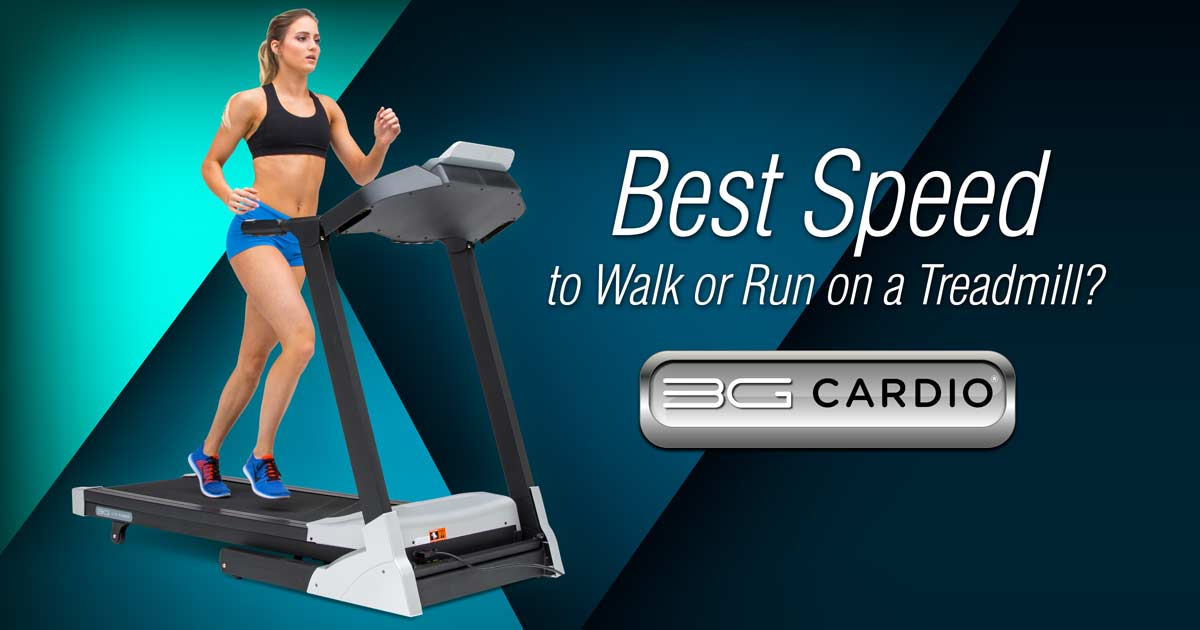
07 Sep What’s The Best Speed To Walk Or Run On A Treadmill?
By AARON DORKSEN – 3G Cardio Fitness Editor
Most fitness enthusiasts have heard the expression “no pain, no gain.”
One loose translation of that saying is this: if you don’t work hard, you won’t get good results.
However, you don’t want to work so hard that you get injured.
When it comes to running or walking on a treadmill, what is the best speed to train at? The answer to that question obviously depends on your fitness level and goals, but here are some tips to maximize your results:
*Build up gradually
If you don’t have a lot of exercise experience, or have been inactive for a while, it’s advised to stay at 4 mph or lower on the treadmill.
Walk at a brisk pace to burn fat and improve aerobic stamina.
The American Heart Association recommends 30 minutes of moderately intense exercise, such as a brisk walk at about 3 mph on a treadmill, five times per week. If the exercise is vigorously intense — comparable to jogging — three times per week for 20 minutes is the recommendation.
*Speeding it up
When you can complete the moderate exercise workouts, it may be time to think about turning the walk into a jog or run depending on your body and goals.
When you are ready to advance into the vigorous aerobic exercise phase, start by using the treadmill at 4 to 5 mph or higher.
*Elite level
Well-conditioned athletes often add interval training to their fitness regimen. Run fast for 30 to 90 seconds, with two minutes of rest afterward. These speeds assume a flat incline — a higher incline will be more difficult. according to livestrong.com.
“Gradually increase your speed throughout your workout,” livestrong.com reported. “Running faster burns more calories, and since you don't want to start your run at a seven mph pace, start out with a brisk walk (4 mph) and every two to five minutes, give your speed a little push until you're running at a five to eight mph pace.”
Read entire LiveStrong.com Article here »
*Look at the data
To find your ideal speed, also called target workout zone, monitor your heart rate and breathing rate. Most treadmills have heartrate monitors, or you can buy an inexpensive device to track it yourself. Your trainer or doctor should be consulted to set up guidelines.
According to runnersworld.com, a general heart rate guideline is to exercise in the range of 60 to 80 percent of your maximum heart rate.
“If you are not accustomed to taking your heart rate, you can also gauge exercise intensity by your breathing rate and how you feel,” runnersworld.com reported. “Just like your heart rate, your breathing rate will increase with exercise, but you should still be able to speak while walking or running. If you cannot speak, slow it down; on the other hand, if you can sing, then pick up the pace!”
A lot of exercising comes down to common sense and paying attention to how you’re feeling. Simply put, if exercise feels too easy, it’s too easy.
On the flip side, if it feels too hard, then back off.
“Adjust your pace, up or down, according to how you feel,” runnersworld.com advised. “You want a pace that makes you sweat, increases heart rate, increases breathing rate, and burns calories; but, also a pace that you can maintain for the duration of the exercise session. Duration is very important, especially when beginning a training plan; better to do 20 or 30 minutes at a slower pace than to last only 10 minutes at a faster pace.”
Of course, one speed doesn’t fit all.
However, in general 2-4 mph on the treadmill is a walking speed and 4-5 mph is a fast walk or jog. Runners will set the treadmill at 5 mph or faster.
To add some variety and difficulty to the workout, set the treadmill incline at 1-2. That closely simulates walking or running outside.
Make sure to warm up appropriately with light walking and stretching.
NOTE: Consult a doctor or certified fitness trainer before starting any new workout program to determine if it’s right for your needs. This is especially true if you (or your family) have a history of high blood pressure or heart disease. If you experience faintness, dizziness, pain or shortness of breath at any time while exercising you should stop immediately.









Sorry, the comment form is closed at this time.